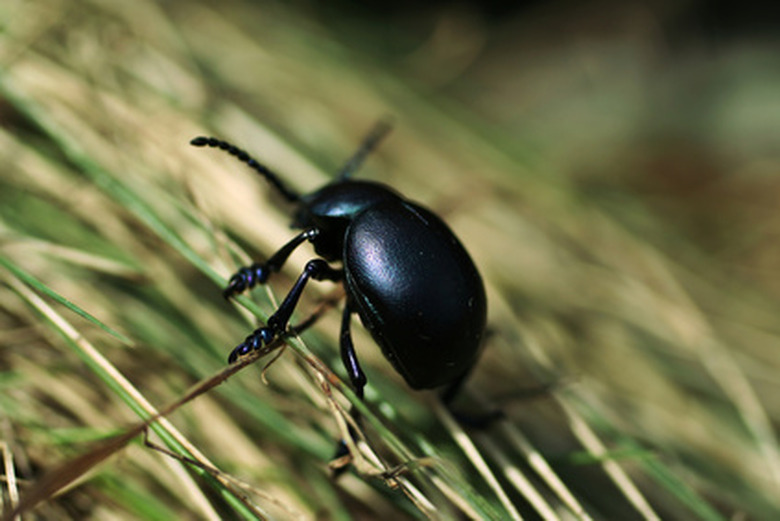How To Identify A Large Black Beetle Bug In My Lawn
Things Needed
- Beetle bug
- Jar
- Paper (optional)
- Insect identification book or website with pictures
Insects are often creepy-looking, and while beetles aren't the oddest looking insects, they are often very troublesome. Some species of beetle will lay eggs that grow into grubs and ruin your lawn, while others will make a mess of plants in the garden that they like to eat. Identifying the beetle can tell you whether you should take action against the insect or leave it alone to help a garden.
Step 1
Catch the bug in a see-through jar or container. Ease up behind the insect, being careful not to disturb it, and gently place the container or jar over it so that the open end is facing down and touches the ground. Slide a paper or the container lid under the container to trap it inside. Glass is the best material for capturing the bug because it is difficult to climb and it allows you to study the insect.
- Insects are often creepy-looking, and while beetles aren't the oddest looking insects, they are often very troublesome.
- Identifying the beetle can tell you whether you should take action against the insect or leave it alone to help a garden.
Step 2
Study the appearance of the insect. Look for identifying markers, such as spots, shiny areas or horns. The tiny details are important for proper identification of the insect.
Step 3
Look at your insect website or book. Pay attention to the climate conditions, the type of lawn, the time of day when the insect was found and its physical appearance. Climate will rule out several beetles and limit the insect to those black beetles living in that climate. The lawn gives a clue about the beetle's habitat, so the type of lawn will also help in identification by ruling out beetles that are not typically found on that type of lawn. Insects are active at different times in the day, so a beetle found at noon will be one that is active during the middle of the day, while a beetle found at night is likely a beetle that is active at night. (If the beetle is found at night, in fact, this is a large clue, as most insects are very active during the day.) Use the book or website to rule out insects based on the details you have gathered, and then look for the possible beetles left. Match the beetle by appearance to pictures of these possible candidates.
- Study the appearance of the insect.
- The lawn gives a clue about the beetle's habitat, so the type of lawn will also help in identification by ruling out beetles that are not typically found on that type of lawn.
